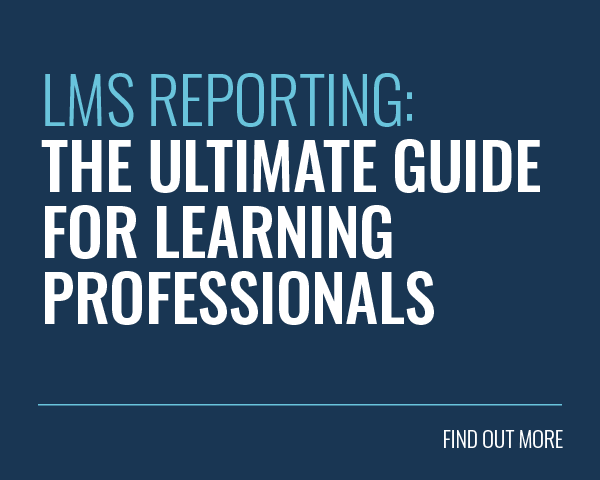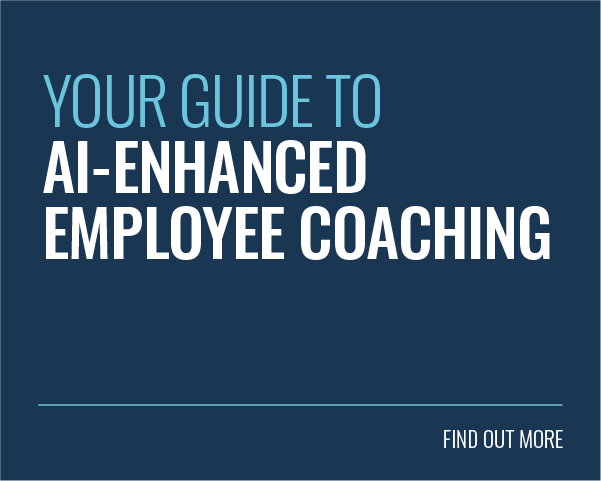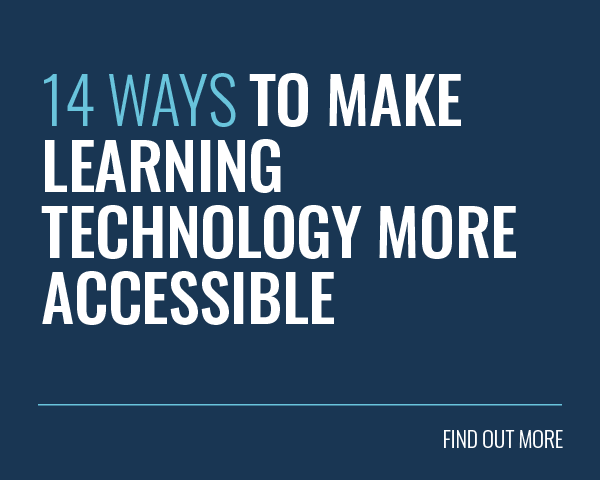If you’ve worked in the tech space for any extended period of time, or use software throughout your organisation, there’s a good chance you’ve heard of an API integration. But what are they and how do they work?
Throughout the course of this article, we’ll explore API integrations in closer detail. We’ll focus most of our attention on learning technology integrations, as that’s where our expertise lies. However, much of what is mentioned here will still hold true across other verticals.
Let’s dig in!

What is an API Integration?
Running enterprise software can be a time-consuming experience, as you always have a variety of administrative tasks to complete if you want to be successful.
For instance, manually entering hundreds of participants information for a new course can be very tedious and time-consuming. It can also result in errors. We’re only human after all!
Fortunately, this data is often already available in your existing business systems. Perhaps the necessary data sits within your HR system, or your CRM. Better still, there is a way for your learning management system to interface with these systems to pull or push information back and forth. This process is known as an integration.
An integration is a process in which two or more applications connect via APIs to allow them to “talk” to each other. This can involve the applications performing a joint function or simply obtaining ad hoc information to ensure data integrity.
Integrations can expedite numerous administrative processes and reduce errors to make your life easier. They also help to ensure that your learning system fits neatly among the rest of your software suite.
API integrations are very common. Google receives 5 billion API calls daily to access its applications.
Integrations help to ensure that connectivity and collaboration remain strong even when workflows and processes change. In fact, 50% of B2B collaborations occur via APIs. If organisations do not have access to APIs and cannot easily interact with your data and business, then collaboration and connectivity will be compromised and you will struggle.
But how do integrations work? To understand this, we’ll need to introduce you to one of our friends. Say hello to the Application Programming Interface or API Integration…
API Integration
We know what an integration is. And we know that systems connect with each other via ‘APIs’. But what’s an API?
Let’s start by looking at what is meant by ‘Interface’.
Interface

All devices that we use have an interface. It can range from a number pad and start button on your microwave, to something as simple as a light switch. We use these interfaces to tell devices what to do.
There is no need to understand the underlying science necessary to heat up a bowl of porridge in the microwave. We only need to understand how to use the interface at our disposal. All of the inner complexities are abstracted away, to leave us with the simplest interface possible.
Next up, let’s explore abstraction.
Abstraction
APIs are there to create a layer of abstraction for users. They hide complex mechanics and simplify operations. In the end, only what’s necessary is visible to the user.
For example, in a car, drivers only use pedals and a stick shift. They don’t see the engine and gearbox that help the car to function (unless they breakdown or they fancy a peek under the bonnet).
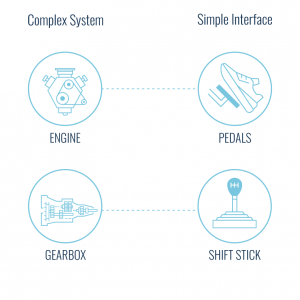
Learning Technology Application Programming Interface
APIs act as a go between that connects your software together. For instance, by using APIs, you can connect together your learning management system (LMS) with other software utilised throughout your organisation. They allow external business systems to interface with your LMS. The data exchanged can travel in two directions:
- Administrators can get data from external business systems and use it in their LMS. For example, they could get a list of employees in a specific department with less than five years in the company and automatically register them for a course.
- Administrators can get data from their LMS and push it into an external business system. For example, they could get a list of completed courses and use the information in an HR system to signal the completion of required courses in staff performance reviews.

An API defines the syntax of the programming functions used to make requests, and defines the response content and the format with which the content is delivered. If your request does not use the correct syntax as defined in the API or if you make a single typo, the API will refuse to process, and you will receive an error message.
If the syntax is correct, then the API will translate your request and transmit it to the server side for processing. The server will process the request and send the response back formatted according to the defined response structure. For example:
{
“firstname”: “John”,
“lastname”: “Doe”,
“username”: “john.doe”,
“date of birth”: “21/05/1997”,
}
API Integration Requests
APIs let developers make specific “requests” or “calls” to send or get information. These requests are most often composed of an HTTP Verb, a Uniform Resource Identifier (URI), a Body (sometimes optional) and an optional information Header. For example:
| HTTP Verb | URI | Body | Information Header |
| GET | /user/{userid} | {Body} | Find User By ID |
Let’s break down these requests into their constituent parts.
HTTP Method
APIs use internet HTTP (HyperText Transfer Protocol) request methods consisting of HTTP verbs indicating which action will be performed. Here are some examples from The Academy LMS (our engagement focused learning management solution):
- GET reads the values of the attributes of a specified LMS object and makes them available for further action. GET does not modify anything in the LMS.
- PUT updates the values of the attributes of a specified LMS object with your desired values. PUT modifies the LMS data.
- POST creates or recreates an LMS object and/or fills its attributes with values. POST adds data to the LMS.
- DELETE deletes or soft deletes a specified object within the LMS. DELETE modifies the LMS.
Endpoints and URIs
Endpoints are API-defined handles allowing access to specific LMS objects. This enables you to create, modify or delete the object in question. They are in API requests at the root of the URI (e.g. “/user/” in “/user{userId}”).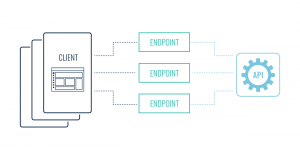
A Uniform Resource Identifier or URI is a sequence of characters that identifies a resource through the web by location, name, or both. It specifies the LMS object accessed through the web with one of the above HTTP requests.
Body or Data
The request can also contain data, which we refer to as {Body}. It gives the parameters required to perform a specific request, such as “Auth Token”, ”Client ID”, or “Event ID” data. However, sometimes a given request requires no data at all.
Header
The ‘Header’ of an API request is a descriptive name, which helps us to understand what this API does. For example, “Find User by ID”.
The Most Popular API Type
In learning technology and other web services (such as CRMs, marketing platforms, and HR systems) the most commonly used API type is the REST (REpresentational State Transfer) API. 70% of public APIs are REST APIs. This is because they offer a gentler learning curve and greater flexibility.
REST APIs depend on system architecture principles which include constraints, namely:
- Being Resource-based, i.e. transacting with named things (identified by URIs) instead of using action verbs.
- How the resource data is presented back to the client (Representation) to be manipulated.
- Imposed constraints:
- Client-Server: architecture separation.
- Uniform Interface: standardising the interaction points between server and client.
- Stateless operation: all necessary information is contained in the request and processing does not take into account other existing data (the “State”). In other words, there is no need to store client-side information on the server.
- Cacheability: keeping duplicates of data at hand when it is requested often.
- Layered System: where a client cannot tell whether it is connected directly to the end server, or to an intermediary along the way. Adding or changing software layers transparently, such as load balancing or security layers, improves system features, performance, and scalability.
- Code-On-Demand: which is the optional possibility to allow customers to run additional code to extend server functionalities.
Why Choose REST APIs?
- You can develop or replace independently the data storage, server, client, and user interface. This allows for greater system scalability and performance, thanks to the client-server architecture, the uniform Interface, stateless operation, and cacheability.
- REST API offers both flexibility and portability, as clients and servers can be hosted or moved to different locations, architecture elements can be developed or replaced independently and layers can be added transparently (e.g. for load balancing).
- Physical platform, operating system and programming language Independence. This offers you more freedom for development, testing and delivery.
Advantages of REST API Over Other APIs
The use of REST APIs has eliminated many of the disadvantages of its predecessor (SOAP APIs). For instance, clients do not need to know the operation semantics as a prerequisite for its use. What’s more, there is no need to use network ports for different types of notifications.
Additionally, REST is able to handle a multitude of resources when it needs to execute multiple operations. SOAP APIs, on the other hand, require many operations to achieve the same result.
Here are some further advantages to utilising REST APIs:
- Are simple to build and adapt.
- Utilise a low amount of resources.
- Create Tasks (process instances) individually and separate their operations.
- With the use of URIs, clients do not require routing information.
- Clients have a generic listener interface for notifications.
The benefits of using API Integration in The Academy LMS
Growth Engineering LMS is the world’s most engaging learning management system. We offer a variety of API integration solutions so you can easily connect your learning technology to other software solutions within your business stack.
There are numerous benefits to utilising our API integration. These include:
- Add new LMS functions to your business systems.
- Initial extension or personalisation and/or future adaptability and innovation for The Academy LMS.
- Compatibility with numerous business systems, including many within your existing enterprise software suite.
- Simplification of access to key information in your LMS’s complex internal structure and programme.
- Automation and efficiency of data access starting from either The Academy LMS or from your business systems.
Final Words

Using an API integration is a simple and powerful way to connect two systems together. This enables you to push data back and forth to achieve a variety of different objectives. 75% of individuals believe that their organisation’s use of APIs has seriously improved their customer’s experience.
Ultimately, this will help to make your systems more efficient and effective. It is no surprise that 34% of organisations use APIs to improve speed to market and innovation. It will also free up your time so you can spend it fine tuning your learning programmes, rather than running administrative tasks.
Here at Growth Engineering, we’ve built a learning management system that includes a well documented series of APIs that you can use to connect with your other business systems. Your learning data has never been more portable.
Want to find out more? Why not speak to one of our Engagement Engineers and set up a live demonstration of Growth Engineering LMS?


